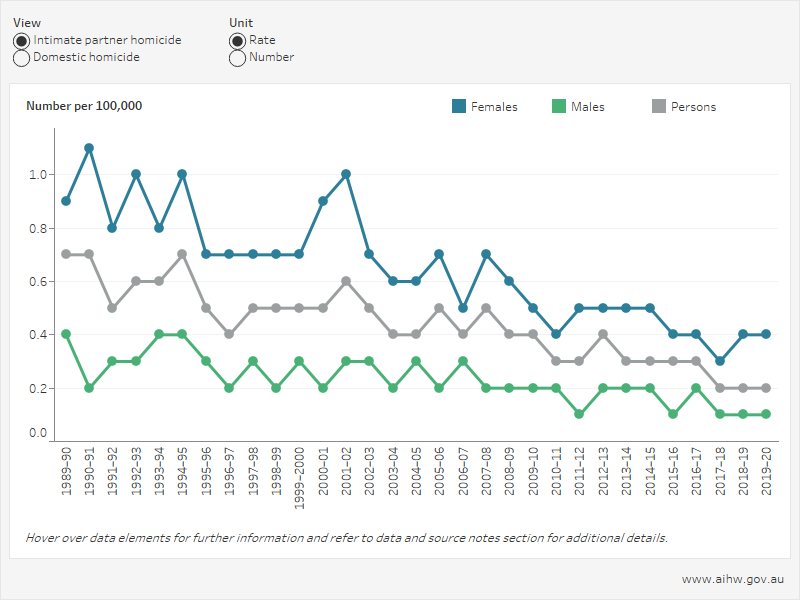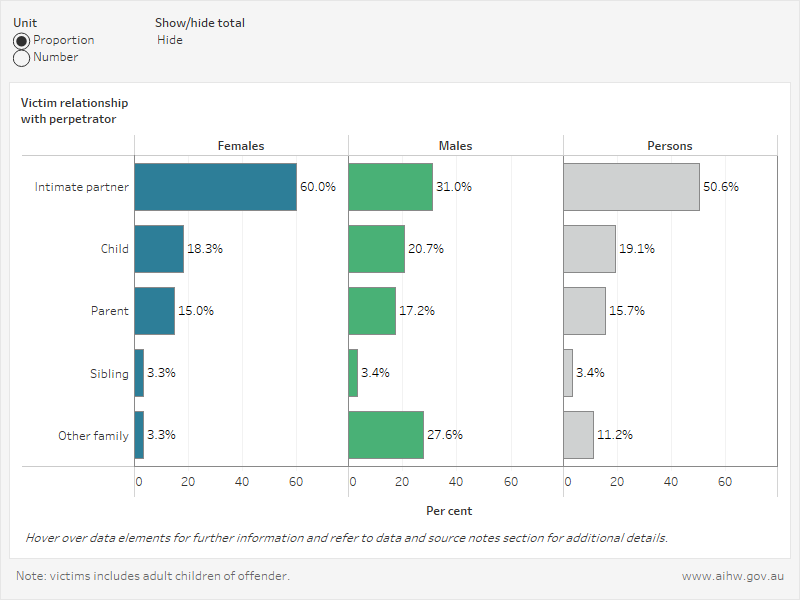Family and domestic violence homicide
Some family and domestic violence incidents are fatal. The unlawful killing of an intimate partner or family member is considered domestic homicide. Data on domestic homicides is available from the Australian Institute of Criminology (AIC) National Homicide Monitoring Program, which is based on information on homicides from police records and coronial records.
Examining domestic homicide incidents over time can help to identify patterns in homicide and evaluate the possible impact of changes in policy and programs. The visualisation below shows the number and rate of domestic homicide incidents and intimate partner homicides over time. Between 1989–90 and 2019–20, intimate partner homicides made up between 45–70% of domestic homicides each year, with the number and rate consistently higher for females than males. Over this period, the rate of intimate partner homicide and domestic homicide decreased, in general, for women and men, with some fluctuations year on year.
Domestic homicide victims, by sex, 1989–90 to 2019–20

Examining the relationships between victims and offenders in domestic homicides can help to identify people at higher risk. The visualisation below shows the proportion and number of domestic homicides by victim relationship with the offender. In 2019–20, there were four times as many female deaths caused by an intimate partner, as there were male deaths caused by an intimate partner.
Domestic homicide victims, by relationship with offender and sex, 2019–20

Notes
- Domestic homicide classification is based on the closest relationship between the victim and primary offender.
- Domestic homicide includes five sub-classifications of homicide based on relationship categories: intimate partner homicide refers to homicide where victim and offender are current or former partners; Filicide refers to homicide where the victim is the child of the offender; Parricide refers to homicide where the victim is the parent of the offender; Siblicide refers to homicide where the victim and offender are siblings; Other family homicide refers to homicide where any other family relationship exists between victim and offender, including nephew/niece, uncle/aunty, cousins, grandparents and kinship groups.
- Family relationships include biological, adoptive, foster and kinship care, and step relatives.
- Domestic homicide excludes culpable driving causing death.
- Percentages may not total 100 due to rounding.
- 'Persons' may include victims for whom sex was 'not stated/unknown'.


